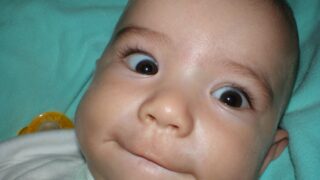As a parent, it’s natural to worry about every little thing when it comes to your child’s health. One condition that can cause concern for parents is craniosynostosis. While it is a rare condition, it’s important for moms to know what to watch out for and when to seek medical attention.
Understanding Craniosynostosis
Craniosynostosis is a condition in which the bones in an infant’s skull fuse together too early. This can lead to problems with normal brain growth and development. In some cases, craniosynostosis can be detected at birth, while in others, it may not be apparent until the child is a few months old.
Signs and Symptoms
There are several signs and symptoms that moms should watch out for when it comes to craniosynostosis. These can include:
- Abnormal head shape, such as a long and narrow head or an uneven appearance
- Soft spots on the skull that close too early
- Increased pressure within the skull
- Developmental delays
- Seizures
If you notice any of these signs or symptoms in your child, it’s important to consult with a pediatrician as soon as possible. Early detection and intervention can make a significant difference in the outcome for children with craniosynostosis.
Diagnosis and Treatment
Diagnosing craniosynostosis typically involves a physical examination, as well as imaging tests such as X-rays or CT scans to assess the skull and brain. If craniosynostosis is confirmed, treatment may involve surgery to reshape the skull and relieve pressure on the brain. The outlook for children with craniosynostosis is generally positive, especially with early intervention and access to specialized care.
Support and Advocacy
As a mom, it can be overwhelming to receive a diagnosis of craniosynostosis for your child. It’s important to remember that you are not alone. There are support groups and advocacy organizations that can provide valuable resources, information, and emotional support for parents facing this diagnosis. Connecting with other parents who have gone through similar experiences can be incredibly helpful.
Conclusion
While craniosynostosis is a rare condition, it’s important for moms to be aware of the signs and symptoms to watch out for in their children. Early detection and intervention are key to ensuring the best possible outcome for children with craniosynostosis. By staying informed and seeking medical attention if any concerns arise, moms can play a crucial role in their child’s health and well-being.
FAQ
Q: Is craniosynostosis a common condition?
A: Craniosynostosis is considered a rare condition, occurring in about 1 in every 2,000 to 2,500 live births.
Q: Can craniosynostosis be detected during pregnancy?
A: In some cases, craniosynostosis may be detected during a prenatal ultrasound, but it is often diagnosed after birth based on physical examination and imaging tests.
Q: What are the long-term effects of craniosynostosis?
A: With early intervention and appropriate treatment, the long-term outlook for children with craniosynostosis is generally positive. However, untreated craniosynostosis can lead to developmental delays and increased pressure on the brain.
[ad_2]


















コメント